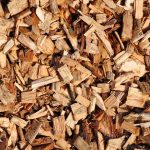Tips for Shredding Leaves for Compost
Wood Chipper Shredders Make Great Composting Material
Not only do shredded leaves make an excellent compost ingredient, they’re wonderful mulch, doing a bang-up job of slowing erosion, helping retain soil moisture and blocking weed growth. They also return nutrients to the soil as they decompose.
We’re happy to say that all Patriot mechanical products, from our multipurpose lawn vacuums to our wide range of chipper shredders, make short work of leaves of all types, reducing even large piles by a ratio of at least four to one in minutes. But there are a few things that you should keep in mind while shredding leaves, to maximize your unit’s effectiveness and save yourself time.
Allow the leaves to cascade smoothly and slowly down into the hopper to avoid clogging. To minimize repetitive bending, pile the leaves up as high as possible and use a shovel to scoop the leaves in to the hopper. Don’t bother to separate any twigs or short branches less than 1.5 inches in diameter—our units can handle them with no problem.
Leaves work best as mulch if you convert them into leaf mold over the course of a winter. This isn’t composting per se—you don’t want them to break down that far—but the process is similar.
Just spread them in a bin in layers 12-18 inches thick, topped by a sprinkling of a nitrogen-rich material like bone meal or grass clippings. Then wet the layer down and mix it thoroughly (one of our garden digging or garden border forks would be ideal for this task). Repeat until your bin is full, then let it percolate over the winter. By spring, this light, fluffy, nutritious mulch will be ready for spreading. Don’t worry if you see white stuff on the leaf mold: this is a kind of benign fungus that just adds to the nutrient value.



